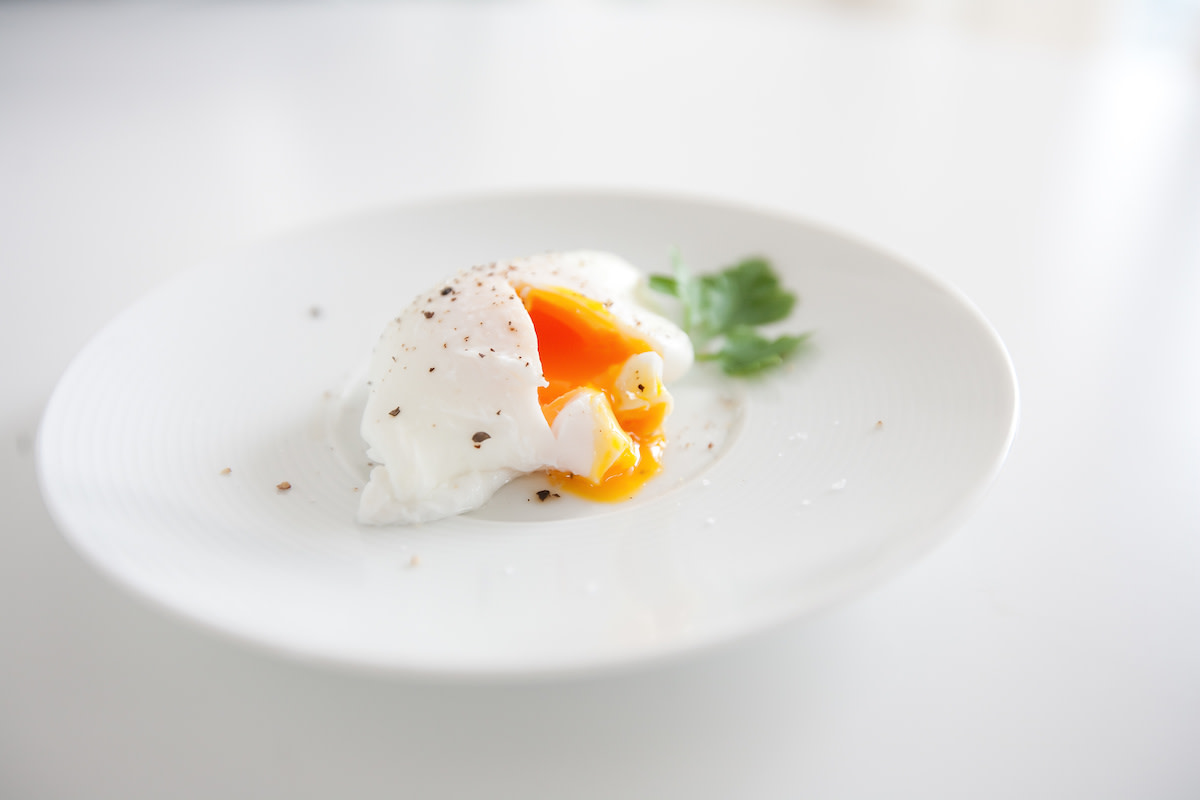Cooking 101: What Is Poaching? How to Poach an Egg and Other Poaching Techniques
Written by MasterClass
Last updated: Aug 4, 2021 • 3 min read
If you want to add to your culinary talents a technique for cooking meats and vegetables aside from sautéing, roasting, boiling, braising, frying, or steaming—it’s time to start practicing your poaching skills. Poaching retains most of the moisture of an ingredient and can leave you with a base for sauce to complete your dish. Poaching might take a little time to master—whether you’re trying to create a hot water vortex for a runny egg or achieve the small bubbles right below boil for chicken breasts–but it’s useful for home cooks for making heart-healthy meals.
Learn From the Best
What Is Poaching?
Poaching–like simmering and boiling–is a moist-heat cooking method that involves submerging food in liquid, typically without using fat. Poaching is a gentle cooking process and a convenient way to prepare one element of a multi-faceted meal without having to keep an eye on it. Be warned, however, that poaching is often a slower process than other stovetop preparations for that same ingredient.
You can complete a lot of poached dishes ahead of time, especially ones that are served at room temperature. Seafood, starchy vegetables, white meat chicken, and stone fruits all shine when poached. Try making Chef Gordon Ramsay’s perfect poached eggs here.
What Are the Different Methods of Poaching?
There are three poaching methods: shallow poaching, submersion poaching, and par-poaching. All poaching methods are great for gently cooking delicate foods like fish, eggs, meat, vegetables, and fruit. The trick with poaching is to keep the liquid at a low temperature–just below the boiling point.
- Submersion poaching covers the entire ingredient and sometimes requires a cover of parchment paper to keep it from bobbing above the liquid. Make sure you allow enough room in the pot for liquid to expand.
- Shallow poaching is a partial submersion using poaching liquid which can later be reduced to a sauce base called “cuisson.” Often, cooks coat the inside of the pan with butter before adding cold poaching liquid. Poaching with the lid on can help cook the ingredient evenly or finish the dish quickly at the end.
- Par-poaching is like submersion poaching, but the ingredients are cooked for half the time then is removed from the heat and set aside in the poaching liquid. Test for doneness for most poaches with the tip of your knife—there should be no resistance.
What Liquids Can You Use to Poach?
There are a wide variety of liquids that can be used in poaching.
- Boiling water
- White vinegar
- Red wine
- White wine
- Court bouillon
- Water
- Milk
- Stock
- Butter
- Aromatics
- Lemon juice
- Miso broth
Often, the poaching liquid is infused with an acid (vinegar, lemon, wine) and with aromatics (bouquet garni with herbs like bay leaves, thyme, rosemary) to add flavor. You want to build a base that compliments whatever you are poaching so the flavors can meld over the slow cook time.
What Is the Difference Between Poaching and Sous Vide?
Sous vide–French for “under vacuum”–is a method that seasons and seals an ingredient in an airtight plastic bag then pre-cooks it in water. Like poaching, it uses a cool temperature to prepare the item, but sous vide does come directly in contact with the water. The liquid used in sous vide is not incorporated into the final dish.
What Is the Difference Between Poaching and Simmering?
Simmering and poaching are similar concepts which mostly only differ in temperature. Neither one comes to a rolling boil but both provide a longer window to cook and therefore control a dish coming together. Peak poaching temperature is 5 to 20 degrees lower than simmering—which starts at about 185ºF.
What Is the Difference Between Poaching and Blanching?
Though both poaching and blanching are helpful in quickly raising the temperature of an ingredient, blanching requires an ice bath after heat to “shock” the ingredient and stop it from cooking. This ice bath help preserves color of blanched vegetables. Blanching, like poaching, draws the moisture out and can be used as a pre-treatment to soften an item. Learn more about blanching vegetables here.
Learn more cooking methods with Chef Gordon Ramsay here.
